| Group 1 race | |
 Doncaster Racecourse is host to the St Leger Stakes. | |
| Location | Doncaster Racecourse Doncaster, England |
|---|---|
| Inaugurated | 1776 |
| Race type | Flat / Thoroughbred |
| Sponsor | Betfred |
| Website | Doncaster |
| Race information | |
| Distance | 1m 6f 115y (2,921 m) |
| Surface | Turf |
| Track | Left-handed |
| Qualification | Three-year-olds excluding geldings |
| Weight | 9 st 3 lb Allowances 3 lb for fillies |
| Purse | £786,000 (2022) 1st: £445,741 |
| 2023 | ||
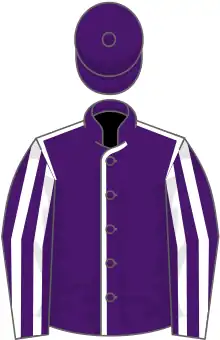 |
 |
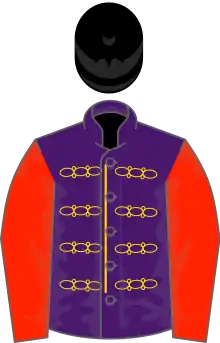 |
| Continuous | Arrest | Desert Hero |
| Previous years | ||
|---|---|---|
| 2022 | ||
 |
 |
 |
| Eldar Eldarov | New London | Giavellotto |
| 2021 | ||
 |
 |
 |
| Hurricane Lane | Mojo Star | The Mediterranean |
| 2020-2011 | ||
|---|---|---|
| 2020 | ||
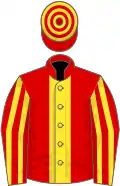 |
 |
 |
| Galileo Chrome | Berkshire Rocco | Pyledriver |
| 2019 | ||
 |
 |
 |
| Logician | Sir Ron Priestley | Nayef Road |
| 2018 | ||
 |
 |
 |
| Kew Gardens | Lah Ti Dar | Southern France |
| 2017 | ||
 |
 |
 |
| Capri | Crystal Ocean | Stradivarius |
| 2016 | ||
 |
 |
 |
| Harbour Law | Ventura Storm | Housesofparliament |
| 2015 | ||
 |
 |
 |
| Simple Verse | Bondi Beach | Fields of Athenry |
| 2014 | ||
 |
 |
 |
| Kingston Hill | Romsdal | Snow Sky |
| 2013 | ||
 |
 |
 |
| Leading Light | Talent | Galileo Rock |
| 2012 | ||
 |
 |
 |
| Encke | Camelot | Michelangelo |
| 2011 | ||
 |
 |
 |
| Masked Marvel | Brown Panther | Sea Moon |
| 2010–2001 | ||
|---|---|---|
| 2010 | ||
 |
 |
 |
| Arctic Cosmos | Midas Touch | Corsica |
| 2009 | ||
 |
 |
 |
| Mastery | Kite Wood | Monitor Closely |
| 2008 | ||
 |
 |
 |
| Conduit | Unsung Heroine | Look Here |
| 2007 | ||
 |
 |
 |
| Lucarno | Mahler | Honolulu |
| 2006 | ||
 |
 |
 |
| Sixties Icon | The Last Drop | Red Rocks |
| 2005 | ||
 |
 |
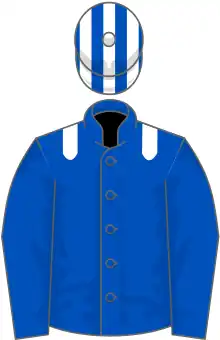 |
| Scorpion | The Geezer | Tawqeet |
| 2004 | ||
 |
 |
 |
| Rule of Law | Quiff | Tycoon |
| 2003 | ||
 |
 |
 |
| Brian Boru | High Accolade | Phoenix Reach |
| 2002 | ||
 |
 |
 |
| Bollin Eric | Highest | Bandari |
| 2001 | ||
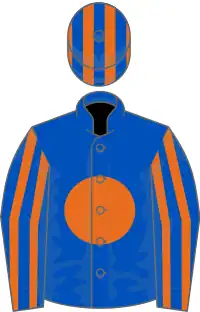 |
 |
 |
| Milan | Demophilos | Mr Combustible |
| 2000–1991 | ||
|---|---|---|
| 2000 | ||
 |
 |
 |
| Millenary | Air Marshall | Chimes at Midnight |
| 1999 | ||
 |
 |
 |
| Mutafaweq | Ramruma | Adair |
| 1998 | ||
 |
 |
 |
| Nedawi | High And Low | Sunshine Street |
| 1997 | ||
 |
 |
 |
| Silver Patriarch | Vertical Speed | The Fly |
| 1996 | ||
 |
 |
 |
| Shantou | Dushyantor | Samraan |
| 1995 | ||
 |
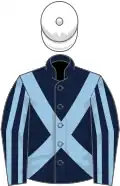 |
 |
| Classic Cliche | Minds Music | Istidaad |
| 1994 | ||
 |
 |
 |
| Moonax | Broadway Flyer | Double Trigger |
| 1993 | ||
 |
 |
 |
| Bob's Return | Armiger | Edbaysaan |
| 1992 | ||
 |
 |
 |
| User Friendly | Sonus | Bonny Scot |
| 1991 | ||
 |
 |
 |
| Toulon | Saddlers' Hall | Micheletti |
| 1990–1981 | ||
|---|---|---|
| 1990 | ||
 |
 |
 |
| Snurge | Hellenic | River God |
| 1989 | ||
 |
 |
 |
| Michelozzo | Sapience | Roseate Tern |
| 1988 | ||
 |
 |
 |
| Minster Son | Diminuendo | Sheriff's Star |
| 1987 | ||
 |
 |
 |
| Reference Point | Mountain Kingdom | Dry Dock |
| 1986 | ||
 |
 |
 |
| Moon Madness | Celestial Storm | Untold |
| 1985 | ||
 |
 |
 |
| Oh So Sharp | Phardante | Lanfranco |
| 1984 | ||
 |
 |
 |
| Commanche Run | Baynoun | Alphabatim |
| 1983 | ||
 |
 |
 |
| Sun Princess | Esprit du Nord | Carlingford Castle |
| 1982 | ||
 |
 |
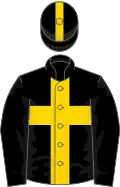 |
| Touching Wood | Zilos | Diamond Shoal |
| 1981 | ||
 |
 |
 |
| Cut Above | Glint of Gold | Bustomi |
| 1980–1971 | ||
|---|---|---|
| 1980 | ||
 |
 |
 |
| Light Cavalry | Water Mill | World Leader |
| 1979 | ||
 |
 |
 |
| Son of Love | Soleil Noir | Niniski |
| 1978 | ||
 |
 |
 |
| Julio Mariner | Le Moss | M-Lolshan |
| 1977 | ||
 |
 |
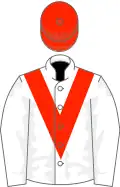 |
| Dunfermline | Alleged | Classic Example |
| 1976 | ||
 |
 |
 |
| Crow | Secret Man | Scallywag |
| 1975 | ||
 |
 |
 |
| Bruni | King Pellinore | Libra's Rib |
| 1974 | ||
 |
 |
 |
| Bustino | Giacometti | Riboson |
| 1973 | ||
 |
 |
 |
| Peleid | Buoy | Duke of Ragusa |
| 1972 | ||
 |
 |
 |
| Boucher | Our Mirage | Ginevra |
| 1971 | ||
 |
 |
 |
| Athens Wood | Homeric | Falkland |
| 1970–1961 | ||
|---|---|---|
| 1970 | ||
 |
 |
 |
| Nijinsky | Meadowville | Politico |
| 1969 | ||
 |
 |
 |
| Intermezzo | Ribofilio | Prince Consort |
| 1968 | ||
 |
 |
 |
| Ribero | Canterbury | Cold Storage |
| 1967 | ||
 |
 |
 |
| Ribocco | Hopeful Venture | Ruysdael |
| 1966 | ||
 |
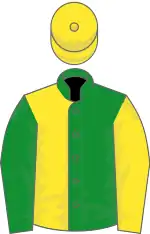 |
 |
| Sodium | Charlottown | David Jack |
| 1965 | ||
 |
 |
 |
| Provoke | Meadow Court | Solstice |
| 1964 | ||
 |
 |
 |
| Indiana | Patti | Soderini |
| 1963 | ||
 |
 |
 |
| Ragusa | Star Moss | Fighting Ship |
| 1962 | ||
 |
 |
 |
| Hethersett | Monterrico | Miralgo |
| 1961 | ||
 |
 |
 |
| Aurelius | Bounteous | Dicta Drake |
| 1960–1950 | ||
|---|---|---|
| 1960 | ||
 |
 |
 |
| St. Paddy | Die Hard | Vienna |
| 1959 | ||
 |
 |
 |
| Cantelo | Fidalgo | Pindari |
| 1958 | ||
 |
 |
 |
| Alcide | None Nicer | Nagami |
| 1957 | ||
 |
 |
 |
| Ballymoss | Court Harwell | Brioche |
| 1956 | ||
 |
 |
 |
| Cambremer | Hornbeam | French Beige |
| 1955 | ||
 |
 |
 |
| Meld | Nucleus | Beau Prince |
| 1954 | ||
 |
 |
 |
| Never Say Die | Elopement | Estremadur |
| 1953 | ||
 |
 |
 |
| Premonition | Northern Light | Aureole |
| 1952 | ||
 |
 |
 |
| Tulyar | Kingsfold | Alcinus |
| 1951 | ||
 |
 |
 |
| Talma | Fraise du Bois | Medway |
| 1950 | ||
 |
 |
 |
| Scratch | Vieux Manoir | Sanlinea |
The St Leger Stakes is a Group 1 flat horse race in Great Britain open to three-year-old thoroughbred colts and fillies. It is run at Doncaster over a distance of 1 mile, 6 furlongs and 115 yards (2,921 metres), and it is scheduled to take place each year in September.
Established in 1776, the St Leger is the oldest of Britain's five Classics. It is the last of the five to be run each year, and its distance is longer than any of the other four.
The St Leger is the final leg of the English Triple Crown, which begins with the 2000 Guineas and continues with the Derby. It also completes the Fillies' Triple Crown, following on from the 1000 Guineas and the Oaks. The St Leger has rarely featured Triple Crown contenders in recent decades, with the only one in recent years being the 2012 2,000 Guineas and Derby winner Camelot, who finished second in the St Leger.
History
Early years
The event was devised by Anthony St Leger, an army officer and politician who lived near Doncaster. It was initially referred to as "A Sweepstake of 25 Guineas", and its original distance was two miles. The rules stipulated that colts and geldings were to carry 8 st, and fillies would receive an allowance of 2 lb.
The inaugural running was held at Cantley Common on 24 September 1776. The first winner was an unnamed filly owned by the event's organiser, the 2nd Marquess of Rockingham. The filly was later named Allabaculia.
The title St Leger Stakes was decided at a dinner party held in 1778 at the Red Lion Inn located in the Market Place, Doncaster, to discuss the coming year's race. It was suggested that it should be called the Rockingham Stakes in honour of the host, the Marquess of Rockingham, but the Marquess proposed that it should be named instead after Anthony St Leger.[1] That year the event was moved to its present location, Town Moor, in 1778.[2]
The race came to national prominence in 1800, when a horse called Champion registered the first Derby–St Leger double. Its length was cut to 1 mile, 6 furlongs and 193 yards in 1813, and despite some minor alterations has remained much the same ever since. The victory of West Australian in 1853 completed the first success in the Triple Crown.
Post-1900
The St Leger Stakes was closed to geldings in 1906. It was transferred to Newmarket during World War I, and the substitute event was called the September Stakes. It was cancelled in 1939 because of the outbreak of World War II, and the following year's edition was held at Thirsk in November. For the remainder of this period it was staged at Manchester (1941), Newmarket (1942–44) and York (1945).
The race was switched to Ayr in 1989 after the scheduled running at Doncaster was abandoned due to subsidence. The 2006 race took place at York because its regular venue was closed for redevelopment.
The St Leger Stakes has inspired a number of similar events around the world, although many are no longer restricted to three-year-olds. European variations include the Irish St. Leger, the Prix Royal-Oak, the Deutsches St. Leger and the St. Leger Italiano. Other national equivalents include the Kikuka-shō, the New Zealand St. Leger and the VRC St Leger.
Records
Leading jockey (9 wins):
- Bill Scott – Jack Spigot (1821), Memnon (1825), The Colonel (1828), Rowton (1829), Don John (1838), Charles the Twelfth (1839), Launcelot (1840), Satirist (1841), Sir Tatton Sykes (1846)
Leading trainer (16 wins):
- John Scott – Matilda (1827), The Colonel (1828), Rowton (1829), Margrave (1832), Touchstone (1834), Don John (1838), Charles the Twelfth (1839), Launcelot (1840), Satirist (1841), The Baron (1845), Newminster (1851), West Australian (1853), Warlock (1856), Imperieuse (1857), Gamester (1859), The Marquis (1862)
Leading owner (7 wins):
- Archibald Hamilton, 9th Duke of Hamilton – Paragon (1786), Spadille (1787), Young Flora (1788), Tartar (1792), Petronius (1808), Ashton (1809), William (1814)
- Fastest winning time (at Doncaster) – Logician (2019), 3m 00.27s
- Widest winning margin – Never Say Die (1954), 12 lengths
- Longest odds winner – Theodore (1822), 200/1
- Shortest odds winner – Galtee More (1897), 1/10
- Most runners – 30, in 1825
- Fewest runners – 3, in 1917
Winners
- ↑ The 1789 race was awarded to Pewett after the first-placed Zanga was disqualified for jostling
- ↑ The 1839 outcome was a dead-heat, but Charles the Twelfth beat Euclid in a run-off
- ↑ The 1850 race finished as a dead-heat, but Voltigeur defeated Russborough in a run-off
- ↑ The 1939 race was cancelled due to the outbreak of World War II
- ↑ The 1989 running took place at Ayr over 1-mile, 6 furlongs and 127 yards
- ↑ The 2006 edition was contested at York over 1-mile, 5 furlongs and 197 yards
- ↑ The 2015 race was initially awarded to Bondi Beach after the first-placed Simple Verse was disqualified, but the decision was reversed on 23 September 2015 after an appeal by Simple Verse's connections.[4]
| Wartime races | |
| |
| |
| |
| |
| |
In popular culture
As the last of the classics, the race marks the end of summer in England.[5] The popular adage "sell in May and go away, come back on St Leger Day" suggests investors should sell their shares in May and buy again after the race.[6]
The Agatha Christie novel The A.B.C. Murders has the St Leger as a plot point near the end of the novel.
See also
References
- ↑ Cawthorne & Herod 1902, p. 10-11.
- ↑ "Race Courses of Great Britain and Ireland". tbheritage.com. Retrieved 17 September 2009.
- ↑ Whyte, James Christie (1840). History of the British turf, from the earliest period to the present day, Volume I. London: H. Colburn. OL 6544990M.
- ↑ Press Association (23 September 2015). "Simple Verse team win St Leger appeal against demotion at Doncaster". The Guardian. Retrieved 23 September 2015.
- ↑ Chambers, Clem (15 September 2006). "Now that the St Leger is over, the runners are under starter's orders". The Scotsman. Retrieved 2 May 2015.
- ↑ Murray-West, Rosie (17 September 2012). "Buy again St Leger Day? It didn't work this year – We investigate the wisdom of one of the oldest investment adages". The Daily Telegraph. London. Retrieved 2 May 2015.
- galopp-sieger.de – St. Leger Stakes.
- horseracinghistory.co.uk – St. Leger.
- ifhaonline.org – International Federation of Horseracing Authorities – St. Leger (2019).
- pedigreequery.com – St. Leger Stakes – Doncaster.
- tbheritage.com – St. Leger Stakes.
Bibliography
- Abelson, Edward; Tyrrel, John (1993). The Breedon Book of Horse Racing Records. Breedon Books. pp. 175–181. ISBN 1-873626-15-0.
- Cawthorne, George James; Herod, Richard S. (1902). Royal Ascot, Its History & Its Associations (PDF). London: A Treherne & Co. Retrieved 1 February 2022.
- Randall, John; Morris, Tony (1985). Horse Racing: The Records. Guinness Superlatives Ltd. pp. 56–68. ISBN 0-85112-446-1.
- Ruffs Guide to the Turf, Winter Edition, 1920